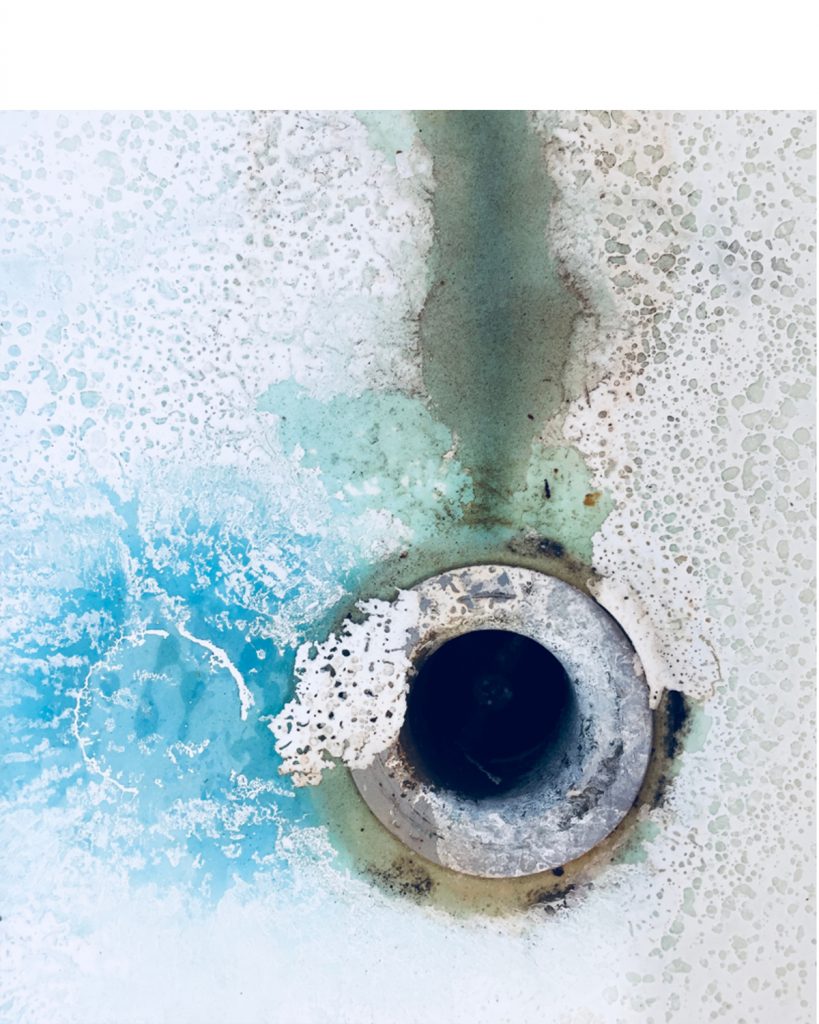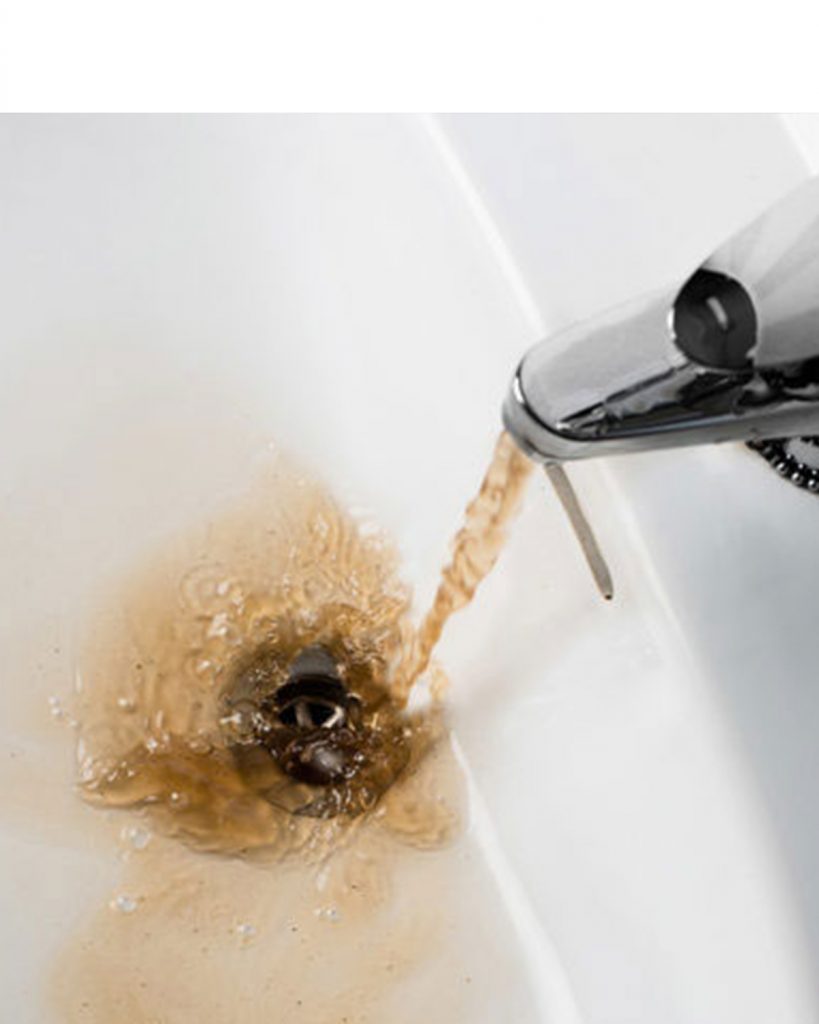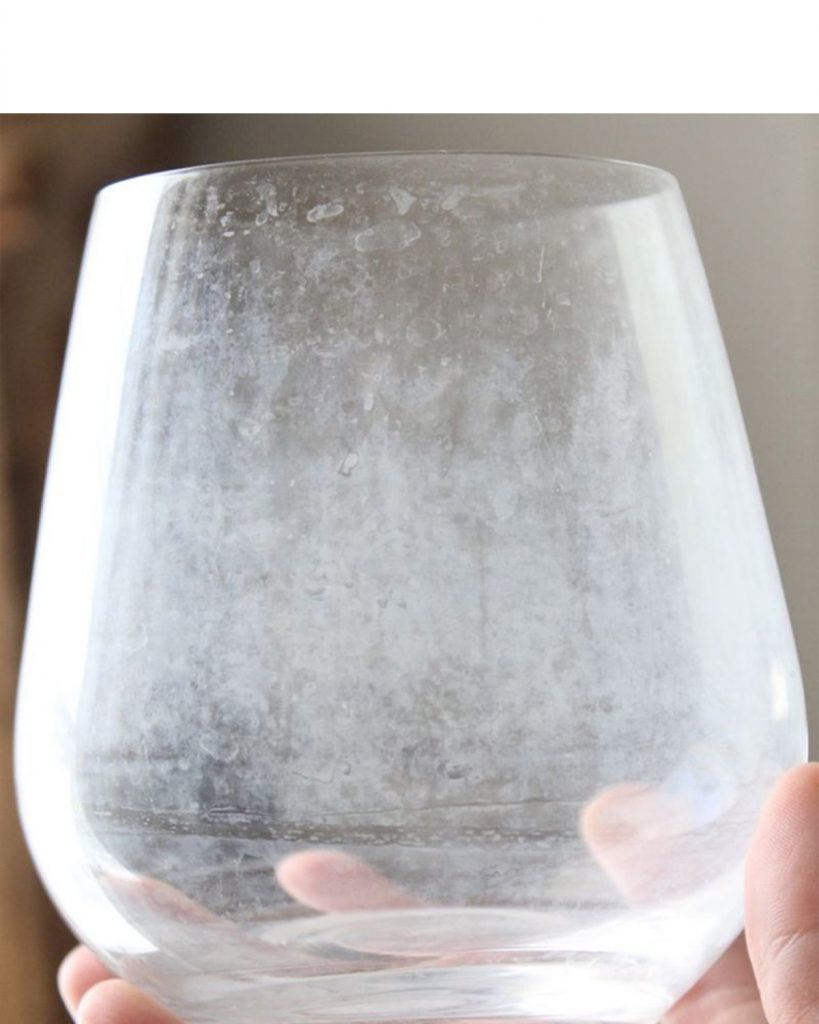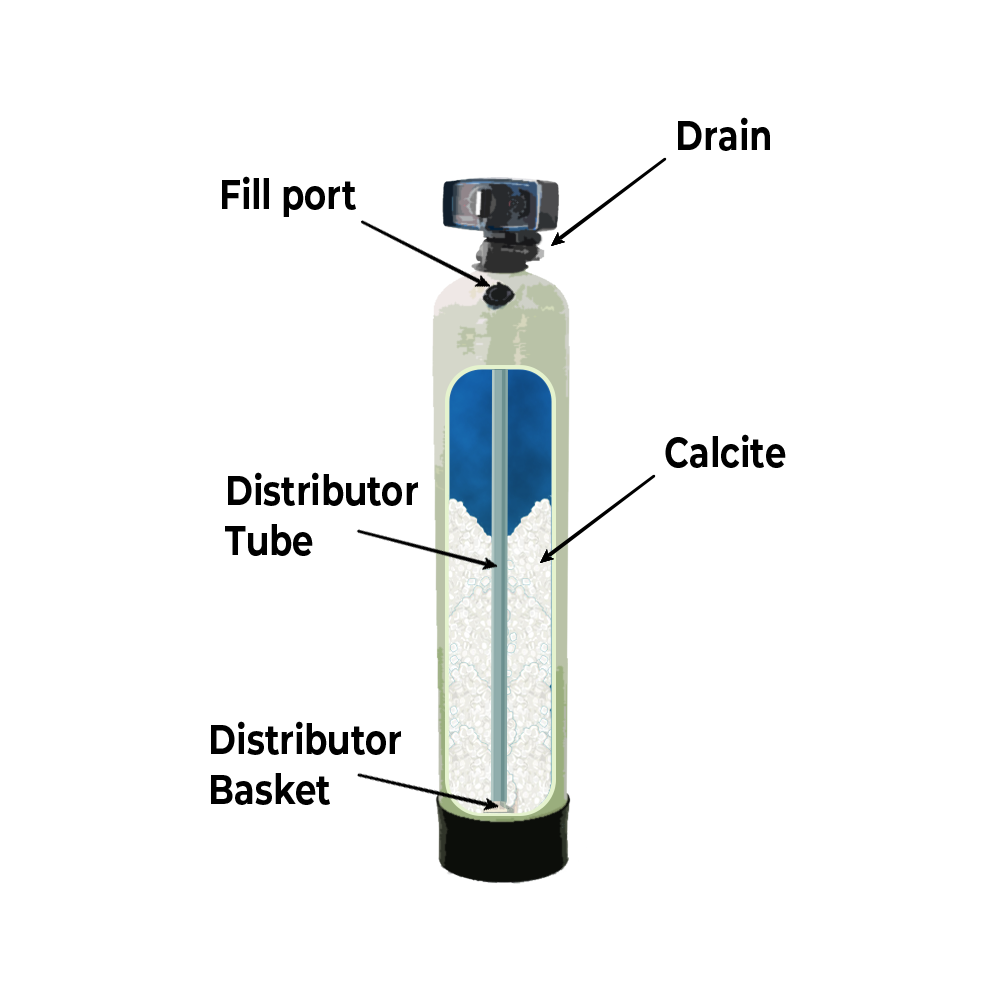Menu
Menu

When water precipitates in the form of rain or snow it comes into contact with carbon dioxide (CO2) in the atmosphere. This lowers the water’s pH into a mild acidity. As water seeps through layers of rock and sediment, the pH will continue to adjust depending upon the minerals it comes into contact with. Because wells are often supplied from shallow groundwater they are more prone to have acidic water.
pH is the way acidity or alkalinity is measured across the scale. This measure can range from 0 to 14, with a pH of 7 being neutral. For example, the pH of lemon juice is around 2 or 3 and is considered acidic while the pH for baking soda is around 9 and is considered basic. If water has a slightly lower pH, though not necessarily unsafe for your health, it will cause metal in pipes, sinks, and appliances to corrode leaving blue-green stains resulting in costly leakage repairs.

Blue-Green Water Stains
This color staining is an indication of corrosion happening in your copper piping from acidic water. Water with pH levels lower than 7 (neutral) is acidic.
Learn more on acidity and our recommendations.
Orange/Red Water Stains
This color staining is due to high contents of iron present in well water systems. Staining can be most visible at home in sinks, shower drains, tubs, and toilet bowls.
See below for our recommendation on iron staining.

White Water Spots and Stains
This color is characterized by its white, hazy stains created by the chalk-like mineral build-up of hard water on surfaces.
Learn more on hard water and our recommendations.

Acid Neutralizer System
For Whole House Water Treatment
Clean Stream Water’s high efficiency pH neutralizer has consistently proven to be our most effective treatment for rebalancing/neutralizing the pH of water in residential, commercial, and agricultural applications for over 30 years. Through the use of calcite or magnesia, the pH is elevated to a neutral 7, providing protection to your plumbing, fixtures, and appliances.

The main body of our acid neutralizer is a mineral tank filled with Calcite, a calcium carbonate media. As acidic water flows into the control valve’s inlet, it is then channeled down through the tank’s media naturally bringing the acidity back to its neutral pH.
Periodically, the system will go into its backwashing cycle where water is flushed through the tank, cleansing the calcite media preventing it from channeling and solidifying in the tank. Water used in the backwashing cycle is then discharged out the drain/septic system.
The electronic control valve at the top of the tank “keeps track” of the gallons that it treats and uses. When it reaches a programmed number (set by the technician), it will automatically put itself through a backwashing process to ensure continuous neutral water.
Our tanks are equipped to produce neutral water for up to one year before needing to be refilled with more calcite media via the fill port.
The use of a semi translucent media tanks allow you, or the technician, to view the media level using a bright light.
Because calcite is a mineral, it will raise the hardness level, so a Water Softener is often recommended after a pH neutralizer system.
Input your search keywords and press Enter.